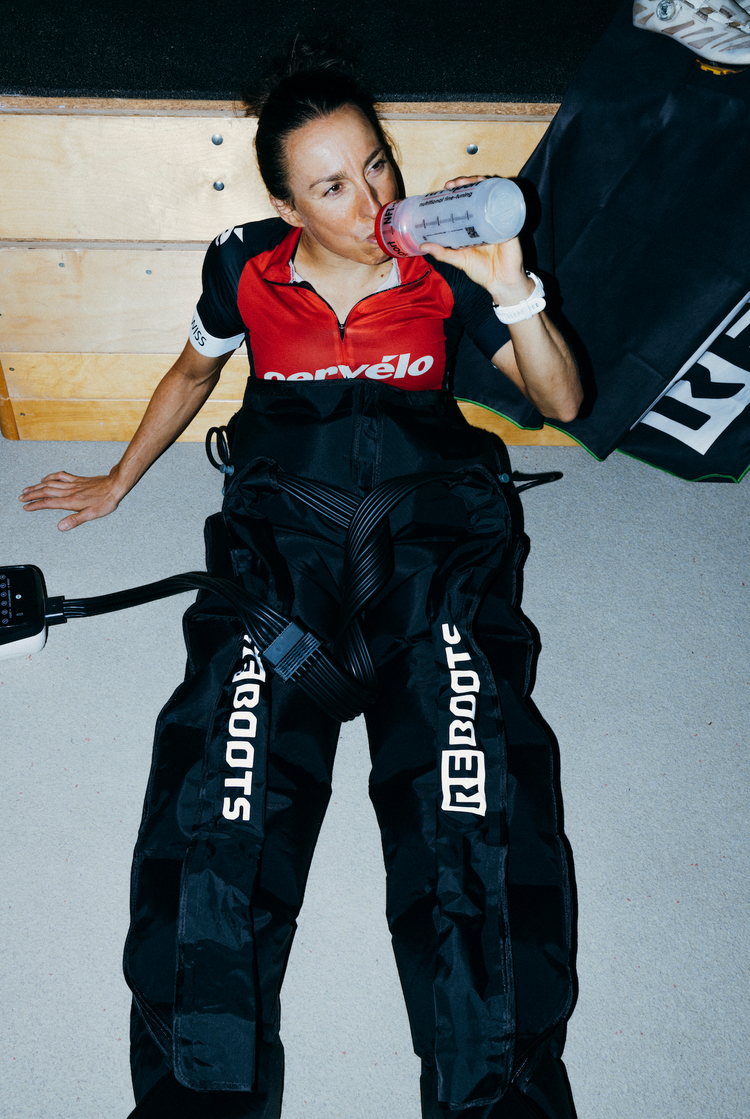Hardly any topic sparks as much discussion among athletes as the question: Recovery Boots or compression socks?
Both support circulation and recovery – but in completely different ways. Here you'll find out which tool is useful when and how you can recover faster with smart compression.
Why Regeneration is Crucial – and the Role Compression Plays
Training makes you strong – but only with sufficient recovery. Every strain creates micro-injuries in the muscles that need time and blood flow to repair.
This is where compression comes into play: It supports venous return, activates lymphatic flow, and ensures more efficient muscle supply.
Both compression socks and Recovery Boots use this principle – the difference lies in the intensity and application.
Compression socks – constant support for everyday life & sports
Compression socks apply a gradual, even pressure on the legs: stronger at the bottom, weaker at the top.
This promotes blood circulation, prevents swelling, and helps keep your legs light even during long periods of exertion.
Typical areas of use:
- Running, Cycling, Fitness
- Travel & Work while standing or sitting
- Everyday & Prevention
BENEFITS
- Supports venous return
- Easily integrated – even on the go
- Ideal for prevention and stability
Compression socks do not provide an active massage effect. They are more suitable for support and prevention, less for quick recovery after intense sessions.
Recovery Boots – active recovery through dynamic compression
Recovery Boots work with air chambers that build and release pressure sequentially – a kind of dynamic massage for the legs.
This rhythmic pressure supports the removal of metabolic waste, stimulates circulation, and can help reduce the heavy feeling after long sessions.
Areas of application:
- After training, races, or competitions
- During active recovery phases
- For athletes who regularly face high demands
ADVANTAGES
- Noticeably fast recovery after sports
- Pleasant, light feeling in the legs
- Ideal for targeted Recovery sessions
Recovery Boots are designed more for conscious recovery phases than for everyday use.
Recovery Boots vs. Compression Socks – the comparison at a glance
Type of compression:
- Recovery Boots → dynamic, pulsating
- Compression socks → static, even
Goal:
- Boots → active recovery & relaxation
- Socks → stability & prevention
Application:
- Boots → 20–45 minutes post-exertion
- Socks → wearable for hours in everyday life
Effect:
- Boots → noticeable recovery
- Socks → constant support
In short
Compression socks help you get through long days or workouts – Recovery Boots get you back on your feet faster afterwards.
When which tool is useful
- After intense sessions: Recovery Boots – for targeted, active recovery.
- In everyday life & on the go: Compression socks – for constant support and less heaviness.
- For ambitious athletes: The combination of both methods brings the greatest effect – stability during the day, recovery afterwards.
Tip: Pay attention to your body. If you feel tension or swelling, it's time for active regeneration.
CONCLUSION
Two tools, one goal – better recovery
Whether at work, during training, or after a competition: Compression remains one of the most effective ways to support recovery.
- Compression socks: ideal for stability & prevention.
- Recovery Boots: perfect for active recovery & relief.



